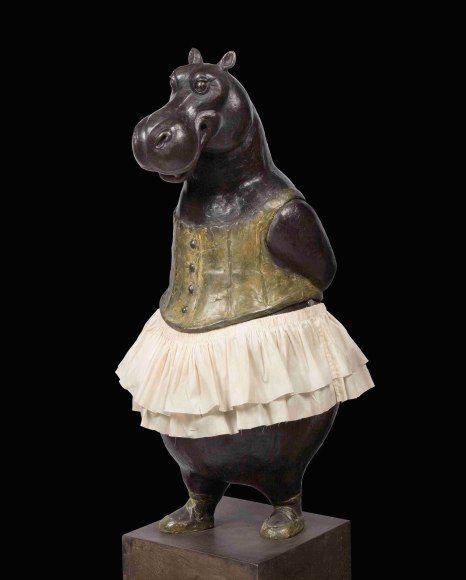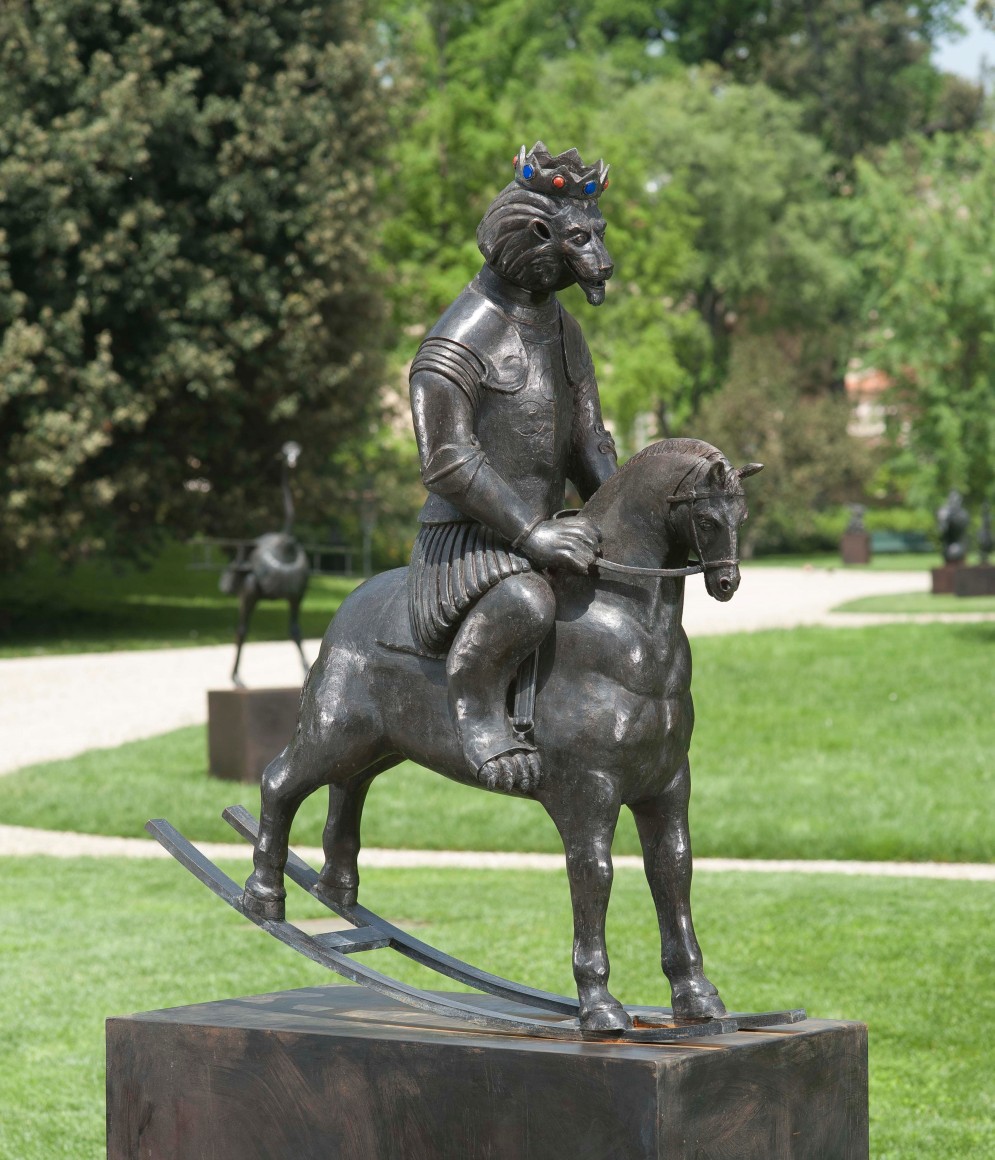
Bjørn Skaarup And His Modern Bestiary
On view at the Accademia delle Arti del Disegno in Florence, the exhibition Un Bestiario in Bronzo – A Bestiary in Bronze features a circus of fantastical, larger-than-life performers. A collection of sculptures and drawings by internationally acclaimed sculptor Bjørn Skaarup, the exhibit contains, as the artist explained, a “Carnival of The Animals.”
As a student of history — influenced by classical mythology, Renaissance art, and 20th century American culture — Skaarup channels these inspirations into his art. Specifically, his love of bestiaries — a compendium of beasts and mythical animals drawn during the Middle Ages — has spurred his most recent exhibition. For Skaarup, his collection of unique sculptures are not merely animals dressed up in human clothing. Instead, as dynamic, large, and vibrant pieces, the animals play “between the limits of nature and culture.”

In an interview with Medium, Skaarup described his love for the bestiary: “I love the tradition of the Bestiary, which originated in the ancient world and includes countless real and imaginary stories about animals and their particular traits and symbolism. Each sculpture presents a whimsical story or allegory to decipher, with sources ranging from ancient fables and art history to music and modern animation.”

Historically, animals as subjects of art were intended to act as representatives, symbols, or allegories for social, cultural, and national purposes. Their anthropomorphizing was supposed to embody the aspirations and follies of humanity.
After thorough research, ranging from works produced during prehistory to the present day, Skaarup wanted to create his own path within the animalier tradition. Working in the epicenter of the Renaissance, Skaarup followed in the bronze work tradition of master artists such as Benvenuto Cellini, Leone Leoni Giambologna, and Pietro Tacca. Using these artistic and cultural foundations, in addition to his own technical skills, Skaarup’s “animals are thoroughly ‘culturalized’—they represent human allegories or use manmade tools.”

Included in the display are “The Majestic Lion, traditional king of the animals, wearing the crown and armor of a great monarch in the style of Medici court sculptor Giambologna, yet he sits astride a rocking horse, a reference to his fleeting and jovial power. Frogs reenact Homeric battles in the Batrachomyomachia, while mice peer through spectacles and listen at telephones as The Five Senses. A cheetah rides a scooter to move faster, a giraffe stands on stilts to reach higher, and a kangaroo bounces on a pogo stick—a “kængurustylte” in Okholm Skaarup’s native Danish.”

These memorable images give shape to Skaarup’s new reading of the tradition. While giving much respect to the past, for the artist, he is constantly seeing “how far the medium can go.” Clearly, Un Bestiario in Bronzo – A Bestiary in Bronze is no exception.
Bjorn Skaarup holds a MA in History and Art History from the University of Copenhagen and a PHD in History from the European University Institute in Florence, Italy. Skaarup has also done post-doctoral work at the Warburg Institute in London and Columbia University in New York. He has written a number of books related to historical, archaeological, and anatomical subjects. Skaarup gained widespread recognition for his installations in New York City in the past few years. His 15-foot-tall Hippo Ballerina has been displayed at Lincoln Center, in the Flatiron District, and, most recently, at Pershing Square Plaza West. In general, his works have been featured in private and public spaces throughout Europe and the United States.
Featured Image via bos-art


